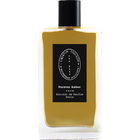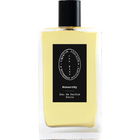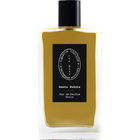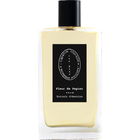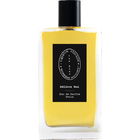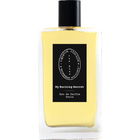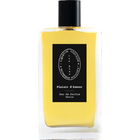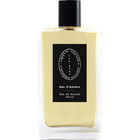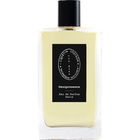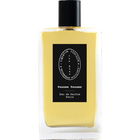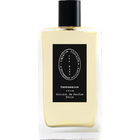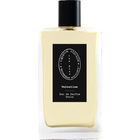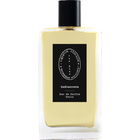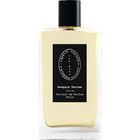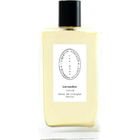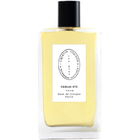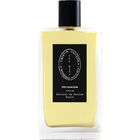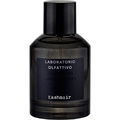
MemoryOScent
37 Reviews

MemoryOScent
Helpful Review
4
the only true saffron perfume...
Saffron is a magical spice. The magic starts from the color of the golden red threads, the warmest, richest hue of red in nature. It continues to enchant me with the way it is produced, wasting millions of delicate purple flowers to produce a kilo of spice that sells at prices comparable to gold, a fitting analogy for an ingredient that gives food a golden hue. And the enchantment is completed with the taste and smell of the fragile red stems. Nothing compares to this. Part medicinal, part earthy, part tobacco, there is simply nothing one can use to substitute real saffron in a recipe. You either have to go out of your way to find some good saffron or you can simply forget about tasting the experience.
Saffron in perfume is a more ambiguous ingredient. Natural saffron cannot be used in perfume simply because it would be too expensive. If one needs millions of flowers for a kilo of saffron that is literally worth it’s weight in cold, you can imagine what would distilling this to extract safranal would mean in terms of cost. Simply out of the question! But safranal can be synthesized and used in perfumery. This unattainable nature of the natural extract has always been a very good excuse to explain why saffron has never smelled in perfumes the same way it smells in my spice wrack. I had come to terms with this and accepted saffron either smothered in rose or trapped in woods, smelling like a rose variation or like shoe polish. I had given up looking for the smell of real saffron in a perfume. Then came my sample kit of Technique Indiscrete and my abandonment was overturned. For the first time I could smell saffron on my skin. Slightly bitter, medicinal in an aloof sort of way. I do not know if it is my laboratory background but I love medicinal notes, camphor, oud, mint, iodine, opoponax, even some treatments of clove, all add a mysterious tension in fragrances. Safran Nobile captures for the first time this aspect of saffron so directly and unabashedly. But what is more interesting is that it doesn’t do so in a self-gratifying way. Libertin Louison did not create a simple “soliflore” with this elusive note but managed to blend it beautifully to add warmth and friendly sweetness to the cool saffron.
Safran Nobile opens with a crisp, cool smell of medicinal void. Imagine taking a deep breath inside an old, empty medicine cabinet: touch of iodine, touch of clove but above all an empty, cool vibe. No mint, no camphor, only the warmest contents of the old cabinet. A suspicion of anise adds this special aloofness but if you do not like this note you are not going to notice it. What makes Safran Nobile very special though is the way it progresses. Imagine an empty box of old-fashioned sugar-coated almonds, stick your nose in it and this is what you get after about half an hour with Safran Nobile on your skin. Saffron, the star of this composition, remains present as an aura of tobacco leaves. A nostalgic drydown of benzoin, vanilla and patchouli that brings to mind a tamer version of Cuir Ottoman. A nostalgic drydown that clashes beautifully with the bitter opening.
Safran Nobile was a very pleasant surprise from a small niche house. It manages to offer a unique take on saffron, showcasing its difficult medicinal aspect but in the end it presents a very wearable, fresh, elegant and nostalgic fragrance.
As a side-note, reading about saffron is very interesting. Crocus sativus, the flower that gives us its crimson stigmas, is a distant cousin of iris. Crocus sativus is a man-made hybrid that does not exist naturally but probably derived from natural Crocus species originating from Southwest Asia but probably grown for the first time in Greece. Crocus sativus is triploid (the biologist in me speaks again) which means that instead of having pairs of chromosomes, one from mom and one from dad, it has triplets of chromosomes. This means that it cannot reproduce without the help of the grower. Banana is another plant with the same peculiarity. Safranal is a powerful antioxidant, kills cancer cells and has antidepressant properties. Saffron has been cultivated and collected for over four thousand years and nothing has changed in the way it is collected and prepared during this time.
Saffron in perfume is a more ambiguous ingredient. Natural saffron cannot be used in perfume simply because it would be too expensive. If one needs millions of flowers for a kilo of saffron that is literally worth it’s weight in cold, you can imagine what would distilling this to extract safranal would mean in terms of cost. Simply out of the question! But safranal can be synthesized and used in perfumery. This unattainable nature of the natural extract has always been a very good excuse to explain why saffron has never smelled in perfumes the same way it smells in my spice wrack. I had come to terms with this and accepted saffron either smothered in rose or trapped in woods, smelling like a rose variation or like shoe polish. I had given up looking for the smell of real saffron in a perfume. Then came my sample kit of Technique Indiscrete and my abandonment was overturned. For the first time I could smell saffron on my skin. Slightly bitter, medicinal in an aloof sort of way. I do not know if it is my laboratory background but I love medicinal notes, camphor, oud, mint, iodine, opoponax, even some treatments of clove, all add a mysterious tension in fragrances. Safran Nobile captures for the first time this aspect of saffron so directly and unabashedly. But what is more interesting is that it doesn’t do so in a self-gratifying way. Libertin Louison did not create a simple “soliflore” with this elusive note but managed to blend it beautifully to add warmth and friendly sweetness to the cool saffron.
Safran Nobile opens with a crisp, cool smell of medicinal void. Imagine taking a deep breath inside an old, empty medicine cabinet: touch of iodine, touch of clove but above all an empty, cool vibe. No mint, no camphor, only the warmest contents of the old cabinet. A suspicion of anise adds this special aloofness but if you do not like this note you are not going to notice it. What makes Safran Nobile very special though is the way it progresses. Imagine an empty box of old-fashioned sugar-coated almonds, stick your nose in it and this is what you get after about half an hour with Safran Nobile on your skin. Saffron, the star of this composition, remains present as an aura of tobacco leaves. A nostalgic drydown of benzoin, vanilla and patchouli that brings to mind a tamer version of Cuir Ottoman. A nostalgic drydown that clashes beautifully with the bitter opening.
Safran Nobile was a very pleasant surprise from a small niche house. It manages to offer a unique take on saffron, showcasing its difficult medicinal aspect but in the end it presents a very wearable, fresh, elegant and nostalgic fragrance.
As a side-note, reading about saffron is very interesting. Crocus sativus, the flower that gives us its crimson stigmas, is a distant cousin of iris. Crocus sativus is a man-made hybrid that does not exist naturally but probably derived from natural Crocus species originating from Southwest Asia but probably grown for the first time in Greece. Crocus sativus is triploid (the biologist in me speaks again) which means that instead of having pairs of chromosomes, one from mom and one from dad, it has triplets of chromosomes. This means that it cannot reproduce without the help of the grower. Banana is another plant with the same peculiarity. Safranal is a powerful antioxidant, kills cancer cells and has antidepressant properties. Saffron has been cultivated and collected for over four thousand years and nothing has changed in the way it is collected and prepared during this time.
1 Comment




 Top Notes
Top Notes  Orange
Orange Lemon
Lemon Heart Notes
Heart Notes  Saffron
Saffron Aniseed
Aniseed Cardamom
Cardamom Jasmine
Jasmine Base Notes
Base Notes  Vanilla
Vanilla Benzoin
Benzoin Patchouli
Patchouli









 Licorice
Licorice UntermWert
UntermWert Yatagan
Yatagan ParfumAholic
ParfumAholic MiniGBIC
MiniGBIC KingLui
KingLui First
First CharlAmbre
CharlAmbre Doctorsdyery
Doctorsdyery Cafenoir
Cafenoir